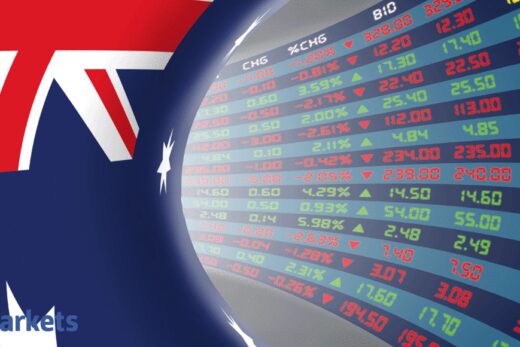I do not want to mention his state to avoid stereotyping but am guilty of one. Marwaris and Gujaratis, thanks to their genes or upbringing, are good in finance and trading. All of us interpret events from the prism of our experience. Thirty-two years ago when I graduated, all I wanted was an MNC job or get admission into an MBA college or a scholarship abroad, maybe not in the same sequence. I would not have joined a startup. Day trading – forget it. Thanks to India becoming a $2.5 trillion economy, risk taking has increased, especially among the graduates of elite colleges like IITs and IIMs and that’s a positive change.
Retail trading, or day trading, has exploded because of falling brokerage rates, democratisation of information, higher transparency and mobile platforms. Account opening is a breeze due to AADHAR and PAN. Fund and share settlement happens electronically. Writing cheques or signing DP slips are now things of the past. In a few minutes, you can open an account and start trading.
The new breed of traders or investors learn derivatives from hundreds of YouTube influencers and Twitter experts, and are quick to start trading too. Their trading horizon is a month at the most, which is the most liquid series in derivatives. And they are quite ‘cool’ about it. I cannot think of any other word that can describe the mindset of this generation of traders. I am just not able to trade futures or options. Many people from my generation are in this camp. I learnt from my mentor Mr G, the importance of taking delivery and holding for at least one year. I learnt investing the hard way and after losing money. We have learnt that day trading, or short-term trading, is a zero sum game and is best left to experts.
Let us look at the data in this interesting
report put out by NSE.
NSE has categorised traders into corporates, domestic institutional investors (DII), foreign institutional investors (FII), proprietary (Prop) traders, individual investors which includes individual domestic investors, NRIs, sole proprietorship firms and HUFs (this is what we call retail), and remaining entities like partnership firms/LLP, trust / society, AIF, depository receipts, PMS clients, statutory bodies, FDI, OCB, FNs, QFIs, VC funds, NBFC into a broad category, called others.
The report considers data till April 2021, but you get the general trend from FY16 till FY22. Data shows clearly that retail has become a significant player in cash and derivatives segment. From FY16 till FY22, the retail share in the cash segment has risen from 33% to 43% and Prop has risen from 21% to 27%. FII share has fallen from 23% to 11%. In index futures, the retail share hit a peak in FY21 at 39% but is now down to its long-term average of around 32%. Prop is virtually unchanged, whereas corporates is down from 14% in FY 16 to 9% now, and others has increased from 7% to 11%.
The decline in the corporate category might be driven by changing tax regulations, which has made arbitrage business unattractive. FIIs are active here whereas DIIs are conspicuous by their negligible presence, due to regulations.
In stock futures, retail has fallen 5% from 26% in FY16 to 21% in FY22 whereas proprietary trading (Prop) has risen from 30% to 34% in same period. Corporate share is falling down across all segments and it is also the same story here. In Stock Futures, DIIs have 6% share and that might be due to hedging. FIIs contribute about 21%.
In index and stock options, data is presented in terms of notional turnover and premium turnover. Here things get interesting. As we mentioned earlier, corporates are losing share to retail and others. In index options, the share of Prop in terms of notional turnover has fallen from 55% in FY16 to 50% in FY22 whereas retail has grown from 21% to 27% in the same period.
In terms of premium turnover, Prop has fallen from 53% to 44% whereas retail has risen from 22 to 31%. This shows retail customers are buying and selling Index options in a huge way. In stock options, Prop has risen from 39% in FY16 to 51% in FY22 in terms of notional turnover, and 42% to 51% in terms of premium turnover. Retail is virtually flat at 30% for both notional and premium turnover. Incidentally, FIIs have lost share in this segment which has been compensated by Prop. Corporates as usual are losing share here also.
Why are retail investors trading index options, and not stock options? Maybe, retail investors are more confident about predicting market movements rather than what will happen to individual stocks. Liquidity maybe? I will appreciate any insight.
Coming to currency futures and options, here again retail has made its presence felt. Retail has risen from 12% in FY16 to 19% in FY22 and Prop is virtually flat at 50% over same period. Incidentally, corporates continue to lose share here too. FIIs have shown market share gain and now contribute 11% to volumes and domestic banks are losing share. They have an alternate mechanism to trade in inter-bank market.
In currency options, retail has risen from 11% in FY16 to 24% in FY 22 in terms of notional turnover, and 9% to 20% in terms of premium turnover. Prop has fallen from 78% to 61% in terms of notional turnover and 80% to 63% in terms of premium turnover.
Clearly, we have a generation of people entering markets with a trading mindset. Anecdotes abound that when retail trades increase, markets fall. This time, it has not fallen for the last one year. The Midcap and Smallcap indices have more than doubled from April 1, 2020 levels. The steep correction of March is a distant memory. Everyone has become a stock picker.
This generation of traders has not seen a meaningful correction, let alone live through one. The Harshad Mehta boom was followed by many years of pain till the IT boom of 1997-2001. Ketan Parekh dot com crash was followed by deep pain till 2003. IT stocks skyrocketed 10 times and lost 90%. Many people were so scarred that they left the market for a long time.
Adam Smith in
The Money Game explains how people who passed through the depression era in America had a different perspective on everything, including investments.
Let us look at the data through another prism, which is the share of Top 100 shares in trading volumes, delivery volumes and retail shareholding. Our analyst Amit Tiwary has put out an interesting chart in our chart book on how this has also changed. Retail shareholding has been consistently falling and the share of FIIs in increasing at expense of both retail and promoters. The promoters owned about 56% of aggregate market capitalisation in March 2005, which has fallen to 50.6% in March 16 and about 49.9% in March 21, effectively indicating that promoter holding has remained virtually unchanged over the last five years.
FII holding has increased from 14.6% to 21% in the same time period. Incidentally, retail and others, who owned about 20.6% in March 2005, owned about 15.3% in March 2021 against 16.3% as on March 2016.
Mutual fund holding during the same period has also increased from 2.8% to 4.6% in March 2016 and now it is 7.7% as of March 2021. This reflects the increasing domestic inflows to mutual funds and insurance companies.
If you look at the share of top 100 shares in NSE cash turnover, it had hit a peak of 90% in August 2013, during the taper tantrum. This has fallen to about 70% in March 2021. In December 2017, it had fallen to 60%, which is broadly in line with the movement of midcap and smallcap indices. As midcap and smallcap indices start doing well, the share of top 100 falls. The previous peak of this index was in Q1 of 2018.
Let us look at another set of data, which talks about delivery volumes. This ranges from 25-30%, and that had hit a peak of about 37% in March 2017. This is now less than 20%; clearly people are doing more intra-day. The trend is clearly down for the last four years.
Khelo India Khelo seems to be the mantra of this generation. They are carrying the video games and Minecraft skills to IPL games and stock markets. Mass scale gamification is happening. Time will tell if it is good or not, or is it just an opinion of an old man who just does not seem to get it. I have yet to come to terms with meme stock investing and we are not even talking of cryptos here.
As Morgan Housel tweets: Social media has permanently changed investor behaviour in ways many professional investors haven’t yet come to terms with.
The markets will correct for sure, but when is the question. The intensity and duration of the correction will shape the mental makeup of the next generation of investors. My advice to
is, allocate some funds for day trading and enjoy. But remember, for most investors, wealth creation takes place by doing the right asset allocation and taking a long-term view of investments.



